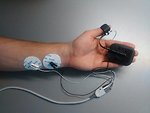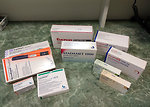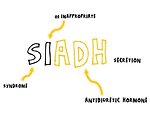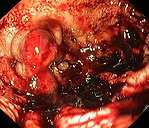Let´s explore new virtual clinical cases on acute medicine. There you can find all virtual cases created during this school year 2017/2018.
Target Controlled Infusion Anaesthesia
Ivo Křikava, MD, Bönisch Vít, Křemečková Petra, Illustrations-Bakošová Mária
In certain situations the use of balanced anaesthesia is not indicated (e.g. malignant hyperthermia). If we cannot use balanced anaesthesia nor regional anaesthesia (due to the characteristics of the surgery) – a TIVA (Total Intravenous Anaesthesia) should come to our minds. And TCI (Target Controlled Infusion) is a way how TIVA can be performed. The advantages of TCI in comparison to manually performed TIVA are for example – easier titration of the anaesthetic agent, it leads to fewer interventions by anaesthesiologist and helps us anticipate the wake up time. The purpose of this algorithm is to introduce the TCI syringe pump, to demonstrate how it works, what the indications are, what parameters are needed and how the complications can be solved with the use of TCI.
Mushroom poisoning
Marek Kovář, MD, Jan Filip Sýkora, MD, Kateřina Bochníčková, Eva Urbánková
Mushroom picking is one of the favorite ways of spending free time in the Czech Republic. Unfortunately, since not everyone in this country happens to be a mycologist there are many cases of fungal poisoning every year. Poisoning can occur in a variety of ways, ranging from banal nausea requiring medical treatment through excessive vomiting and diarrhea to severe organ failure. This condition, without timely and intensive care might lead to patient's death. In this algorithm you will diagnose and then adequately treat poisoning with different types of fungi. We have three scenarios prepared, how many you go through depends on you.
Life-threatening Bleeding
Olga Smékalová, MD, Michaela Brázdilová, Jan Sapák
Life-threatening bleeding can be defined in many aspects: by extent of blood loss, by the presence of clinical and laboratory signs of tissue hypoperfusion or signs of organ functions failure. Sometimes bleeding is not associated with major blood loss, but it threatens the life by localization of bleeding to the regions important for maintaining vital functions (eg. brain). In our algorithm we pursue bleeding from esophageal varices, which are frequent complication of hepatic cirrhosis. The goal of this algorithm is to show you the right steps and resolution of the therapy of life-threatening bleeding.
Pulmonary embolism II
Olga Smékalová, MD, Kateřina Matoušková, MD, Klára Fabiánková, Dalibor Zimek
Pulmonary embolism is one of the most frequent life threatening diseases and according to statistics it is the third most common cause of cardiovascular mortality (after myocardial infarction and stroke). The goal of this algorithm is to show that pulmonary embolism is not a rare disease and that one should keep it in mind during a diagnostic process. This algorithm also points out the fact that pulmonary embolism occurs moreover in younger population because of very widespread risk factors which are for example smoking, a use of oral contraceptive pills or long flights by airplane.

Peripartal Life-threat...

Acute coronary syndrom...

Brain death and organ...

Anaesthesia management...

Neuromuscular blockade...

Water Rescue service III

Severe respiratory inf...

Anaesthetic management...

End-of-Life Decisionin...

Anaesthetic management...

SIADH and hyponatremia

Jehova Witnesses in a...

Mushroom Poisoning

Target Controlled Infu...

Pulmonary embolism II

Life-threatening bleeding





